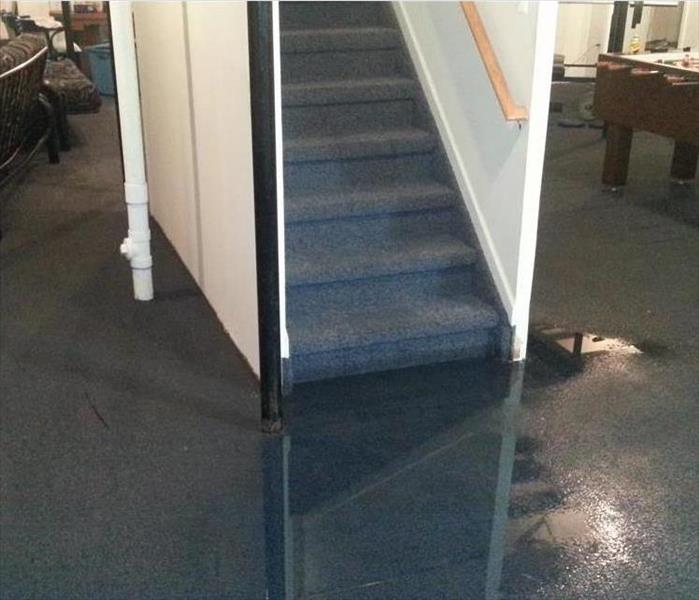How to Handle a Basement Flood
7/10/2020 (Permalink)
Things to do immediately after a basement flood
- First, make sure that it’s safe to enter your home. Check for structural damage, such as cracks, holes or warping.
- Immediately shut off the electrical supply to your home at the main circuit breaker. Be aware of electrical wires that are under the water level.
- If the flooding is due to a burst water pipe in your home, shut off the main water supply.
- Avoid direct contact with floodwater, which may contain dangerous contaminants. If you must walk through floodwater, wear protective clothing, such as disposable overalls, eyewear, gloves, and a face mask.
- Call your insurance company, take photos, and document all damaged items. Make a list of the belongings to restore and to discard. This will help you with your insurance claim.
- If you have a sump pump installed, wait for it to drain the floodwater. If the pump has a backup battery, it should drain the water even if the power is off.
Basement flood cleanup tips
- Quickly remove affected items from floodwater to avoid mold growth, warping, and rot. Items that suck up a lot of water (like carpet and furniture) can usually be salvaged if they have been in floodwater for less than 24 hours. Otherwise, throw them away.
- Completely dry the basement to avoid further damage and mold growth.
- Suck up the water with a sump pump and a Wet-Dry vacuum.
- Use dehumidifiers and ventilate the basement as much as possible. Use fans and open windows if the weather allows, but not when the outside humidity is high.
- Remove the baseboards (if present) and drill 1-inch holes halfway between the wall studs at the base of the walls. This allows moist air from behind the walls to evaporate.
- Properly drying a flooded basement may take up to two weeks.
- After everything has been dried, clean and disinfect the basement contents and structure (walls, foundation floor, drywall, etc.). You may need to discard the drywall and wood if a lot of mold has developed.
- Don’t use bleach to clean mold because bleach kills live mold but not mold spores. Household detergent is preferable.
- Regardless of the size of the mold-affected area, strongly consider contacting a mold remediation company. They can identify the moisture source and restore the moldy surfaces efficiently and without risk of mold recurrence.
- Make any necessary repairs, such as filling foundation cracks, replacing damaged drywall with a mold-resistant type, and sealing windows and vents.
- If your basement has been flooded with sewage, check out our tips to handle sewage backup in a basement.
How to prevent basement flooding
- Clean your gutters and downspouts and divert rainwater six feet away from the house. Also, make sure the ground is slightly sloping away from your home.
- Install an emergency generator to provide your house with electricity during blackouts.
- Install a sump pump that automatically drains water from your basement and prevents water from rising. Choose one with a backup battery.
- Seal openings or cracks in the walls, floors, foundations, and windows of your house.
- Install porous pavement around your home to help absorb rainwater and thawed snow.
- Ensure that your drainage systems and plumbing are working properly. Have them checked periodically by a professional.
SERVPRO of Lynn/Lynnfield has been helping customers with water damage for more than 20 years. Call us today ay 781.593.6663





 24/7 Emergency Service
24/7 Emergency Service
